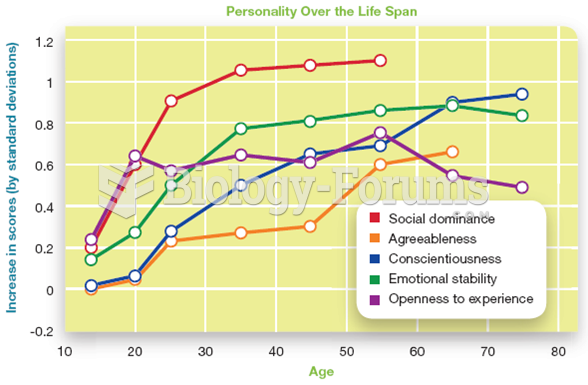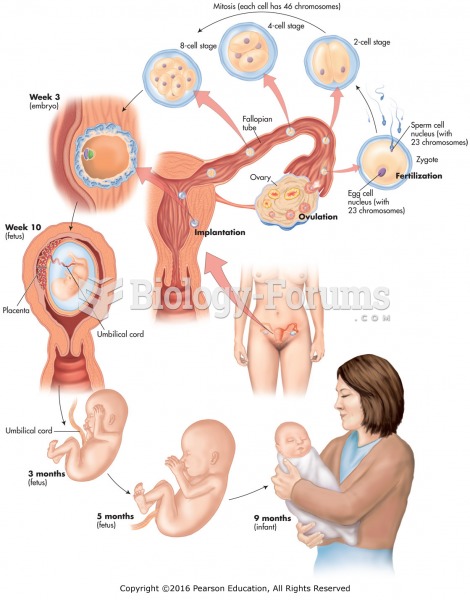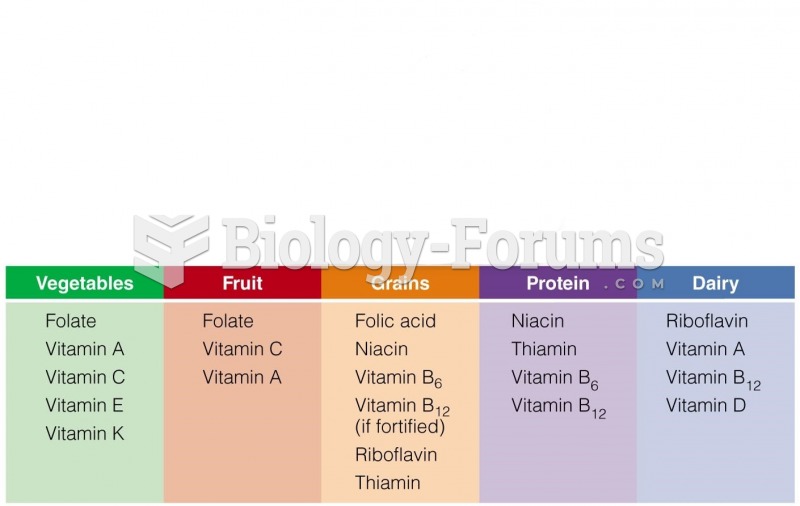|
|
|
There are more nerve cells in one human brain than there are stars in the Milky Way.
There are immediate benefits of chiropractic adjustments that are visible via magnetic resonance imaging (MRI). It shows that spinal manipulation therapy is effective in decreasing pain and increasing the gaps between the vertebrae, reducing pressure that leads to pain.
The calories found in one piece of cherry cheesecake could light a 60-watt light bulb for 1.5 hours.
Pubic lice (crabs) are usually spread through sexual contact. You cannot catch them by using a public toilet.
Acetaminophen (Tylenol) in overdose can seriously damage the liver. It should never be taken by people who use alcohol heavily; it can result in severe liver damage and even a condition requiring a liver transplant.







